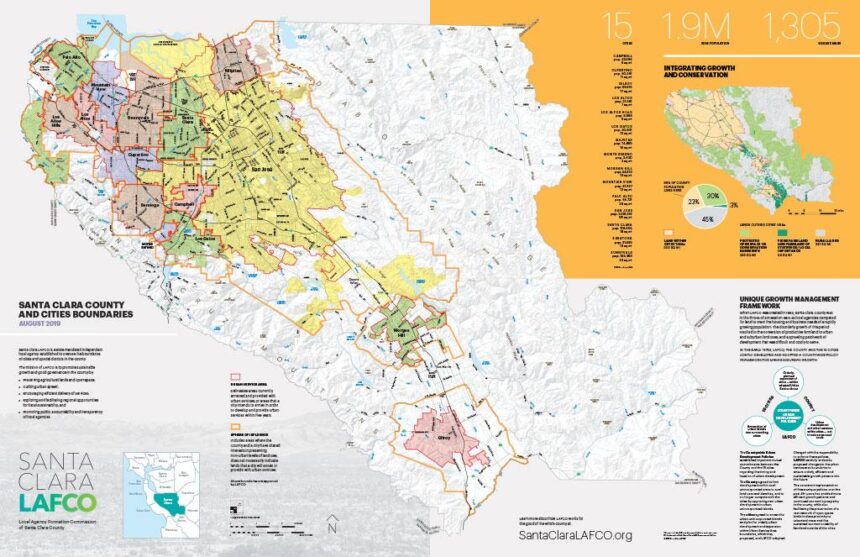In a recent development that has intensified the dialog surrounding homelessness in Silicon Valley, santa Clara County officials have voiced strong criticism of San Jose Mayor Matt Mahan’s controversial proposal to arrest individuals experiencing homelessness who refuse offers of shelter. The plan, which aims to address the growing crisis of homelessness in the region, has sparked fierce debate among community leaders, advocates, and residents alike.Critics argue that enforcement measures could exacerbate the challenges faced by vulnerable populations rather than provide the meaningful support they require. As the city grapples with an escalating homeless crisis, the plan raises significant questions about the balance between public safety and compassion in addressing one of the moast pressing social issues in the region.
Santa Clara County Voices Concerns Over San Jose’s Homeless Arrest Strategy
Officials in Santa Clara County have expressed serious concerns regarding San Jose’s recent proposal to arrest homeless individuals who refuse shelter options. Critics argue that this approach not only criminalizes homelessness but also fails to address the underlying issues that contribute to it. Many local leaders and advocacy groups emphasize the need for a more compassionate response that prioritizes support services over punitive measures. They suggest that focusing on housing-first initiatives and accessible mental health care could yield more sustainable solutions.
| Concerns Raised | Proposed Alternatives |
|---|---|
| Criminalization of Homelessness | Housing-First Initiatives |
| Potential Increase in Legal Costs | Expanded Mental Health Services |
| Impact on Community Relations | Increased Accessibility of Shelters |
Advocates for the homeless point out that forcing individuals into shelters may not solve their complex situations, which often include mental health issues, addiction, and economic hardships. Community engagement is deemed essential, encouraging dialogues between city officials, service providers, and those directly affected by homelessness. By fostering understanding and collaboration, stakeholders hope to create an approach that respects the dignity of individuals while addressing the social crisis that continues to escalate in urban areas like San Jose.
Analysis of Alternative Solutions for Addressing homelessness in San Jose
In light of recent criticism directed at the mayor of San Jose regarding his controversial approach to addressing homelessness,various alternative solutions have been proposed to tackle the issue with more empathy and effectiveness. Stakeholders, including advocacy groups and local residents, are calling for initiatives that prioritize housing-first strategies and tailored support services. Unlike punitive measures, these alternatives focus on housing stability by offering:
- Permanent supportive housing: Providing long-term housing with supportive services to address mental health and addiction issues.
- Transitional housing programs: Short-term facilities that serve as a bridge to permanent housing, including counseling and job training.
- Community-based outreach: Mobile units that connect individuals in need with resources and services rather of enforcing penalties.
- Job placement and workforce development: Programs aimed at helping the homeless reintegrate into the workforce.
Additionally, improved coordination among local agencies and increased funding for mental health services are critical components of a accomplished strategy. Investment in prevention programs that address the root causes of homelessness, such as economic instability and lack of affordable housing, should be prioritized. Below is a brief table summarizing these options:
| Solution | Description |
|---|---|
| Housing-first | Focuses on providing stable housing before other issues are addressed. |
| Outreach programs | Connects individuals directly with necessary resources. |
| Job training | Aids in skill development for better employment opportunities. |
| Mental health support | Offers counseling and treatment options to those in need. |
Recommendations for Collaborative Approaches to Support the Homeless Population
The ongoing debate over how best to support the homeless population in Santa Clara County emphasizes the need for collaborative strategies that prioritize compassion and sustainability. Rather than resorting to punitive measures, stakeholders should consider the following approaches to create a more inclusive habitat for individuals experiencing homelessness:
- Integrated Service Models: Develop partnerships among local governments, non-profits, and healthcare providers to streamline access to essential services such as housing, mental health support, and job training.
- Community-Based Solutions: engage local communities in identifying specific needs and resources, ensuring that solutions are tailored and relevant to the populations they serve.
- Public Awareness Campaigns: Foster understanding by educating the wider community on the complexities of homelessness, advocating for empathy rather than stigma.
Furthermore, establishing a collaborative task force could facilitate ongoing dialogue and assessment of existing policies. This task force may include representatives from various sectors, such as:
| Sector | Role |
|---|---|
| local Government | Policy development and funding allocation |
| Non-Profit Organizations | Direct service provision and advocacy |
| Law Enforcement | Community safety and support services |
| Healthcare Providers | addressing physical and mental health needs |
This multi-faceted approach aims to not only address immediate concerns but also work towards long-term solutions that empower individuals and foster a community-driven response to homelessness.
Closing Remarks
As the debate surrounding homelessness in San jose intensifies, Santa Clara County officials are raising significant concerns about the mayor’s controversial proposal to arrest individuals who decline shelter. Critics argue that such a strategy could further marginalize an already vulnerable population and divert crucial resources away from more effective, compassionate solutions. With the city grappling with rising homelessness rates and limited housing options, the need for a thorough and humane approach has never been more pressing. As discussions continue, it remains to be seen how this contentious issue will evolve and what measures will ultimately be implemented to address the complex realities of homelessness in the region. Stakeholders from various sectors will need to collaborate to forge a path that prioritizes dignity, support, and long-term solutions for those in need.









